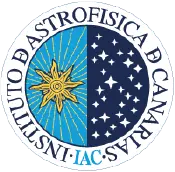

ADVANCING SEARCH FOR EXTRATERRESTRIAL LIFE
As a precursor to the full-scale observatory, Small ELF provides a platform for testing and refining the technology and instrumentation required for detecting and characterizing exoplanets.

SMALL ELF TO REVOLUTIONIZE EXOPLANET EXPLORATION
Small ELF incorporates a hybrid interferometric structure, similar to the one proposed for ELF that will use high resolution direct imaging and machine learning data inversion algorithms to capture high-resolution images and provide a broader baseline for observing objects beyond our planet.
Small ELF uses Fizeau telescope beam synthesis and a technique called rotational inversion imaging to detect and map across an exoplanet the faint signals of oceans, forests, deserts and the biosignatures of early life or exotechnologies. It analyzes the reflected light by a planet to see life beyond Earth. The data collected by Small ELF will be studied by scientists to use advanced algorithms and machine learning techniques on the ELF observatory.

A REVOLUTIONARY PROTOTYPE FOR EXOPLANET EXPLORATION
The Small ELF telescope is made up of 15 off-axis 0.5-meter telescopes that share a common parabola. They are arranged in a circle with a diameter of 3.5 meters.
This project, Small ELF, is one of several under IACTEC’s “Large Telescopes” initiative. Other projects include the Cherenkov Telescope Array, the European Solar Telescope, and the New Robotic Telescope.
The Small ExoLife Finder (ELF) prototype is designed to test and refine the technology required for detecting and characterizing exoplanets. It also aids in developing and demonstrating new techniques for improving the sensitivity and precision of exoplanet observations The Small ELF gives an exciting opportunity to conduct a survey of nearby stars to identify potential exoplanetary targets for future exploration.
THE ELF SPOTLIGHT
OUR PARTNERS





















